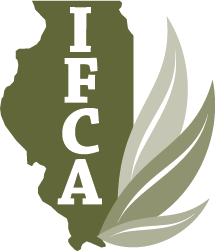Soil Temperature Resources
Soil temperatures are the best guide to knowing when it's a good time to apply fall nitrogen. At the 4R Field Day on October 23, Dr. Emerson Nafziger provided some perspective on fall nitrogen application. There are several resources available at the State Water Survey's WARM website, which is located at: https://www.isws.illinois.edu/warm/soil/. You do need to create a free account to use this website. Soil temperatures that stay around or below 50 degrees is when bacterial activity in the soil slows; however it never completely stops until the ground freezes, which is why it is so vital to use a labeled nitrification inhibitor in all fall applied ammonia.
Dr. Nafziger recommends using the WARM site to look at the average hourly temperatures for your region of the state as well as the temperature trends and forecasts, and also at the 4-inch bare soil temperature at noon. With cold nights continuing in the forecast along with what we have learned from nitrogen tracking studies, the application of stabilized fall ammonia can be considered at this time, but it is always advisable to test the soil temperature in the actual field of application and look for it to be in the 50 degree or less range. One benefit of the NREC funded nitrogen research is that we can now evaluate recent on-farm data to make informed decisions on nitrogen management.
Each morning, IFCA posts a resource from the WARM site at our home page at www.ifca.com for you to consider, but the determination of when to apply fall nitrogen is best made by crop advisors who know their local area and the soils. Never apply ammonia to saturated or sandy soils, and application south of the vicinity of IL Route 16 is also not advised. Rate is also a vital consideration, so please use the new MRTN app to make the best determination for your region of the state or go to http://cnrc.agron.iastate.edu/
